HYBRID EVENT: You can participate in person at Barcelona, Spain from your home or work.
Aquaculture Automation
Aquaculture Automation
Aquaculture automation refers to the use of automated technologies to improve the efficiency and productivity of fish farming. Automation systems are employed to monitor water quality, control feeding, and adjust environmental conditions, reducing the need for manual labor. Sensors and real-time data analysis allow for precise adjustments, ensuring optimal conditions for fish growth. Automation also helps minimize human error, enhance farm management, and reduce operating costs. Technologies such as automated feeders, water filtration systems, and AI-based monitoring are increasingly being integrated into aquaculture systems, contributing to more sustainable and scalable fish farming operations.
Committee Members

Perry Raso
Matunuck Oyster Farm, United States
J L Giovanna Hesley
Education Emerita, CropKing Inc., United States
Virendra Kumar Goswami
Indian Institute of Technology, India WAC 2026 Speakers

Amit Das
Memorial University of Newfoundland, Canada
Mandeep Kaur
Panjab University, India
Pavarot Noranarttragoon
Department of Fisheries, Thailand



Title : Application of Artificial Intelligence and NISAR satellite to study the air sea CO2 exchange and aquatic toxicology to develop ‘Aquatic Pollution Remediation Technologies’(PART)
Virendra Kumar Goswami, Indian Institute of Technology, India
Title : Conditionally pathogenic microparasites (Microsporidia and Myxosporea) of mullet fish potential objects of mariculture in the Black and Azov Seas
Violetta M Yurakhno, A. O. Kovalevsky Institute of Biology of the Southern Seas of Russian Academy of Sciences, Russian Federation
Title : New approaches to assessing and managing the multispecies fishery in the Gulf of Thailand
Pavarot Noranarttragoon, Department of Fisheries, Thailand
Title : Integrating art, science and rural development: The multifaced role of aquarium keeping
T V Anna Mercy, Kerala University of Fisheries and Ocean Studies, India
Title : Seaweed aquaculture policy gap analyses in Indonesia, Kenya, and Tanzania
Megan Considine, The Nature Conservancy, Puerto Rico
Title : Utilizing art to enhance learning STEM subjects required for aquaculture
J L Giovanna Hesley, Education Emerita, CropKing Inc., United States